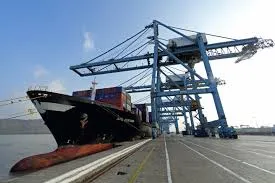MEGHA ARORA and ABHISHEK ROHATGI discuss approaches to risk allocation in construction agreements. Construction projects in the energy and infrastructure sectors are inherently complex in nature owing to several factors. Being land-intensive, such projects are dependent upon availability and suitability of land and are also susceptible to vagaries of nature. Large construction projects are typically labour-intensive and reliant on availability of raw materials and a logistic framework for the supply of construction material and equipment. Multiplicity of stakeholders, a dynamic legal and regulatory environment and social and political factors involved in construction projects also have an impact on time, cost and successful implementation. Given the intricacies of construction projects, it becomes imperative to clearly identify and allocate risks between the various stakeholders. However, allocation of risks is hardly ever a straightforward issue and often becomes a key negotiating point.Approaches to equitable allocation of risks The allocation of risks in construction agreements is generally guided by two key principles. First, the party that can foresee and control a particular risk usually bears it. For instance, in a supply agreement (non-EPC structure), the risk of loss or damage to the supplies during transportation is typically borne by the party responsible for transporting them, even if the title to the supplies has already transferred to the other party. Second, the risks are typically assigned to the party best equipped to manage and execute the tasks related to the assigned risk effectively. For instance, in an EPC agreement, while the developer may be responsible for approving the design drawings provided by the contractor, such approval does not absolve the contractor of its responsibility for design defects. Additionally, where neither party controls a particular risk, it is typically the developer who is required to assume the responsibility, on the basis that they stand to benefit from the construction of the project. For example, in the case of a force majeure event that causes delays, an extension of time is usually granted, as such events are beyond the control of all parties. Similarly, if a change in law affects the costs under the construction agreement, equitable adjustments to the contract price are often provided to account for the unforeseen impact. Contracting parties must precisely define the scope of force majeure and change in law events in their agreements, as courts are generally reluctant to extend any relief beyond what has been contractually stipulated. A negotiated positionAllocation of risks is usually a negotiated position and depends on the nature of the arrangement between the parties. For example, in a supply agreement for a construction project, if the delivery point is in a remote or inaccessible location, the contractor will typically be responsible for delivering the supplies only up to the nearest generally accessible point, beyond which the developer will be responsible for providing the right of way and facilitating access to the delivery point. However, in an EPC agreement, the contractor would ordinarily bear the responsibility of securing and managing the right of way as part of their overall scope of works.Further, the allocation of risks between the parties in a construction agreement is subject to certain financial thresholds, as set out under the limitation of liability clause. Limitation of liability clause usually caps the liability of either party towards the other, either to the contract price or a percentage of the contract price. They also often include certain exclusions – such as fraud, wilful misconduct or gross negligence – that render the limitation inapplicable, thereby exposing the liable party to full recovery of claims for losses suffered. However, limitation of liability clauses in construction agreements must be carefully drafted so as not to exclude legitimate claims entirely, as such exclusions may be unenforceable for violating public policy. In this regard, in Simplex Concrete Piles (India) Limited v. Union of India, the Delhi High Court held that contractual clauses that deprive a party of its statutory entitlement to remedies under law are void under Section 23 of the Indian Contract Act, being opposed to public policy. Protecting interestsFurther, merely allocating risks under construction agreements may not be sufficient to protect the interests of the parties. The allocation of a risk to a particular party is meaningful only if that party has the financial capacity to bear the costs arising if the risk materialises. To address this, bank guarantees, payment security, liquidated damages, representations & warranties backed by indemnities are effective tools for allocating liability for specified risks to a party. Such risks are then complemented by the requirement to obtain adequate insurance coverage for the insurable risks, ensuring that the financial consequences of such risks can be managed effectively. A common trend in EPC agreements is to allocate identified risks to the developer, while all remaining risks are allocated to the contractor, who is expected to cover these risks under a contractor’s all risk (CAR) insurance policy. CAR insurance typically provides coverage for the risks related to, inter alia, material damage and third-party liability, including damage to the properties of the different stakeholder and injuries caused to individuals at the project site etc. This approach ensures that all risks — including those not expressly identified — are allocated between the parties, thereby addressing the wide range of variables that may arise during the project. However, in a split contract structure, where the supply, service and works elements are delineated, often between various group entities, the back-to-backing of risks and associated insurance coverage becomes crucial. After commissioning of the project, the developer often continues to bear greater risk despite appointing specialised operation and maintenance (O&M) contractors, whose liability is usually limited to the service fee or a percentage thereof. Developers may face far higher losses—such as liabilities towards off-takers— if the asset is not adequately insured. Business interruption insurance, therefore, becomes a critical tool during the O&M phase to mitigate such risks. In conclusion Risk allocation in construction agreements serves as a critical mechanism to manage the uncertainties inherent in such projects. While risks in a construction project cannot be entirely eliminated, their consequences can be mitigated through equitable allocation of the risks between the various stakeholders. The risk allocation must be based on clear and rational principles, which consider the ability of the stakeholders to control and mitigate the consequences of such risks. Further, allocation of risks by itself is not sufficient and must be backed by the actual ability of the respective stakeholder to bear the financial consequences that might occur if the risks were to eventuate. Accordingly, the allocation of risks to a stakeholder may be coupled with the requirement of having such allocated risks covered by adequate insurance policies. About the authors: Megha Arora is a Partner and Abhishek Rohatgi is an Associate at CMS IndusLaw Megha brings over 20 years of extensive experience in advising clients across sectors like energy & infrastructure, climate change, natural resources & mining, construction & heavy engineering, public-private partnerships, urban infrastructure and transportation. Abhishek is a member of the energy, infrastructure and natural resources team at CMS IndusLaw and regularly advises clients in these sectors.




















